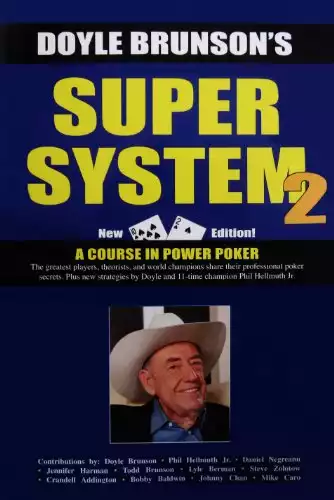Rules of the Game
Ace to Five Triple Draw is a lowball game where the best hand is A2345 and neither straights nor flushes count against you. Essentially it is the same game as Deuce to Seven Triple Draw except with different hand rankings. It is not nearly as popular in cash games as Deuce but it still is a part of many mixed cash games and tournaments that occur at the WSOP.
The game is played with blinds and the action before and after the 1st draw is at the lower limit. The rounds after the 2nd and 3rd draws are at the higher betting limit. For greater ease in reporting hands, the rounds after the 1st, 2nd, and 3rd draws are often referred to as the flop, turn, and river.
Basic Strategy
Ace to Five is a one winner limit game so a tight aggressive style is widely considered ideal. This means that one should always enter the pot with a raise and frequently re-raise someone that entered before you if that will significantly increase the odds of getting the pot heads-up. Equities run close in this game so chopping up the blinds has a lot of value and you will not often be severely punished in the event that you run into a better hand.
Many of the tougher decisions before the first draw revolve around keeping a four card seven such as 3567 or drawing two. If the pot is contested multi-way you should draw two, but tend to draw one heads-up. However, with smoother draws such as A247 you have more implied odds and should probably draw regardless of the number of opponents in the pot.
Much of the play after the first draw is fairly straightforward. If you are drawing fewer cards than your opponent you have an automatic bet. It is particularly important to bet after the second draw if you have a one card draw and your opponent is drawing two. You must take a shot at winning the pot without a showdown.
When you are both drawing the same amount you should tend to bet only when you improve. When you are drawing more cards you should be check/folding or check/calling most often but when the situation is right you must not be afraid to put in a check/raise if you improve dramatically.
For example, after the second draw if you improved to an A24567 after drawing two you should often check raise an opponent that drew one. It is not because your holding is a monster in this game; it is because the vast majority of players will bet regardless of whether or not they improved. And they should be betting because when you don’t improve at all you must fold, so to balance it out you must punish them when you hit. It is also possible that your opponent may break a better hand which is obviously an outstanding result.
Suppose we are in position after the 2nd draw with a marginal made hand and our opponent draws one. In Deuce to Seven it is somewhat common knowledge that the breakpoint is a jack; that is assuming no knowledge of any discards the pat jack is a small favorite over any draw. In Ace to Five the breakpoint is typically a ten low although this advantage is slight and thus tens should tend to be broken to gain implied odds in position. However, it would generally be a mistake to break any nine heads-up even with a hand with a potential smooth draw underneath such as A2349.
Starting Hand Standards
A reasonable set of opening requirements at most tables would look something along the lines of:
Early position/ Hijack: (26% hands played)
- Made Sixes or better
- Four Wheel Cards
- Four to a Six
- Three Wheel Cards
- A26-A46, 236, 246, and 346
Admittedly this is a very high percentage of hands to open with in early position so if you are inexperienced and/or are facing a tough lineup you can eliminate the bottom of this list.
Cut-off: (31% hands played)
- Early position/ hijack hands
- Three to a Six
Button: (42% hands played)
- Cut-off hands
- A2-34
Further Learning
Super System 2 by Doyle Brunson (Rating 8/10) – Daniel Negreanu wrote a chapter on Deuce to Seven which is an excellent introduction to triple draw lowball and adds a section on the specific adjustments that need to be made when playing Ace to Five. The majority of the material is solid; however, some of the advice for Ace to Five opening standards appears to be overly tight. Considering folding a hand as good as 356 on the button in an unopened pot would be extremely “weak-tight”.
Next: Ace to Five Triple Draw – Strategy before the First Draw->

